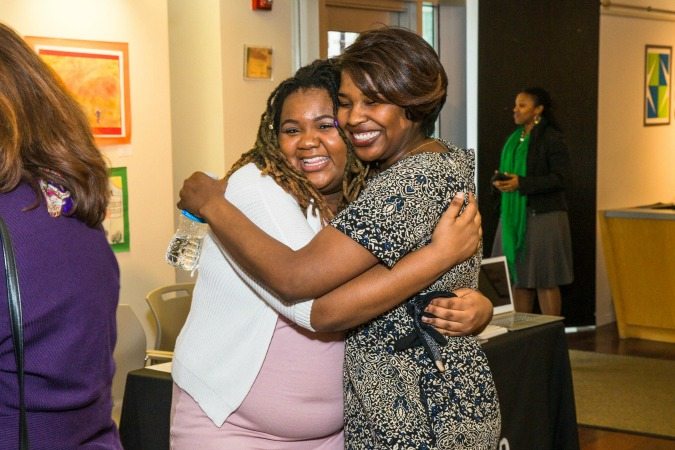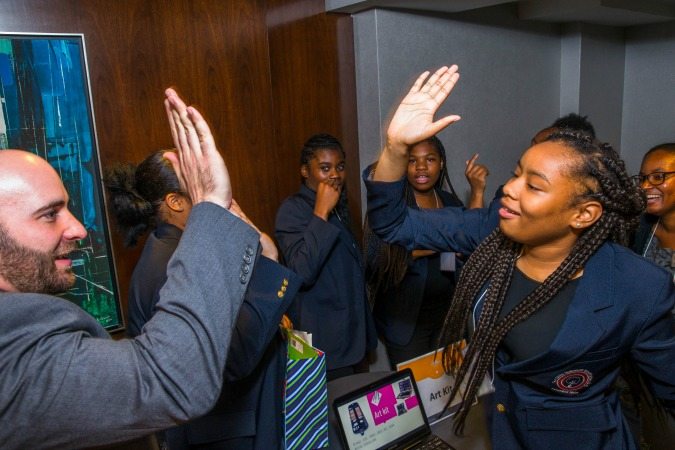Last week, our CEO Jean Case announced the exciting news that she will be writing a book about the Be Fearless principles we have been promoting since 2012. Her book will feature stories of fearless people and organizations—big and small, historical and modern—making big bets, experimenting, building unlikely alliances of changemakers, confronting and living through failure, and letting urgency conquer fear.
We have been so inspired by so many individuals and organizations that have surfaced in our work to date. Remember the 20 fearless changemakers from our 2012 Finding Fearless campaign? They’re still out there disrupting! We’ve also shined a light on innovative organizations that inspire us through our Be Fearless case studies and spotlights. And, if you haven’t yet checked out our latest experiment – a new show on Facebook Watch where we talk to fearless innovators and organizations—we hope you will watch, follow us and give us feedback!
So as we look to find new stories of fearlessness, across industries and around the world, here’s some inspiration to fuel the search—some highlights from the stories we’ve heard, including a fearless narrative that came from our own CEO on the importance of failing forward.

The Robert Wood Johnson Foundation
Foundation Director, Karabi Acharya took to our blog to share how she and the Robert Wood Johnson Foundation are working toward a culture of health in the United States, a feat some think is out of reach. Acharya talks about how the organization is reaching beyond its bubble to look at international approaches to health issues.
Inner City Advisors and Fund Good Jobs
We talked to Inner City Advisors CEO, Sean Daniel Murphy about how the organization is boldly betting on small businesses that provide good jobs for local residents. Inner City Advisors and Fund Good Good Jobs are an example of betting on underrepresented entrepreneurs and “riskier” businesses that provide community benefit.
Kapor Center for Social Impact
The Kapor Center is working to promote diversity in the tech sector, which is no small challenge. The organization works all the way down the pipeline to close the gap at every step from schooling to long-term career success for women and people of color. We learned how Kapor Center acts with urgency and forms partnerships to promote tech inclusion.

Baltimore Corps
Baltimore Corps co-founder and CEO, Fagan Harris talked to us about how he and Baltimore Corps work to foster Baltimore’s potential as a city. Through Baltimore Corps’ fellowships, professionals get to work on a variety of problem solving initiatives in Baltimore. At the time we interviewed Harris, the organization was only two years old, a great case in experimenting early to pursue a vision.
Global Press Institute
The Global Press Institute makes big bets and lets urgency conquer fear by employing women reporters of all walks of life to cover a variety of news using their unique perspectives. The women report on overlooked issues and do so while overcoming many barriers facing female journalists around the world. We learned how the Institute makes everything work while navigating all of their unique challenges.
Open Road Alliance
Open Road Alliance is in the business of catastrophes. The organization gives a lifeline to organizations facing sudden crises through recoverable grants. We learned how the organization acts with urgency and redefines traditional philanthropy to support organizations in emergency situations.

Born This Way Foundation
Maya Enista, Executive Director of the Born This Way Foundation wrote about how the organization, founded by Lady Gaga and her mother, came together. Enista shared how the organization is working to build a kinder and braver world through national community-oriented programs. And the organization is reaching beyond its bubble, taking risks, being bold and failing forward to work toward a kinder world.
The Painful Acknowledgement of Coming up Short
Finally, we wanted to share one of our own pieces, coming from our CEO, where we decided to be transparent about how we were going to fail forward. Jean Case spoke candidly about a high-profile initiative the Case Foundation took on that fell short of its goals. And she talked about how we were going to turn that failure into productive steps forward.
We hope this has inspired YOU to help us on our next Finding Fearless project! If you or a person or organization you know of lives out the Be Fearless principles like the ones mentioned in these story highlights, we want to hear the story. Share it at FindingFearless.org.




